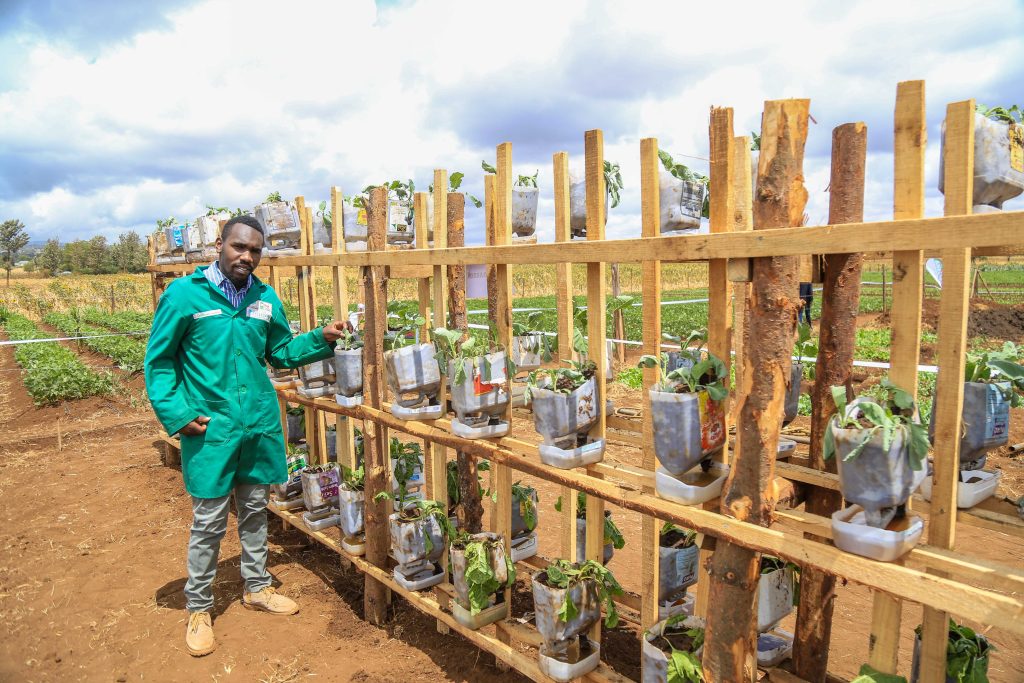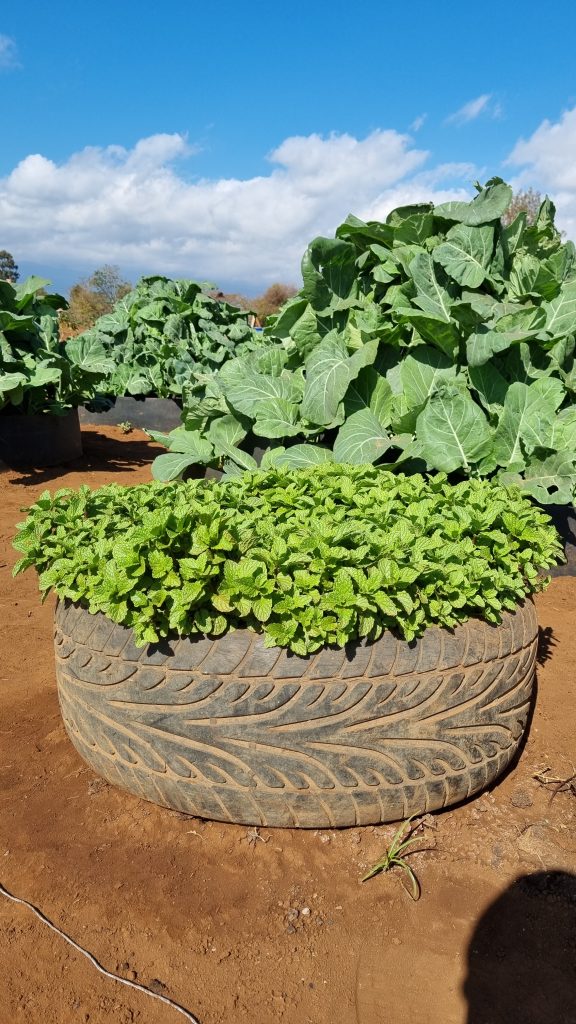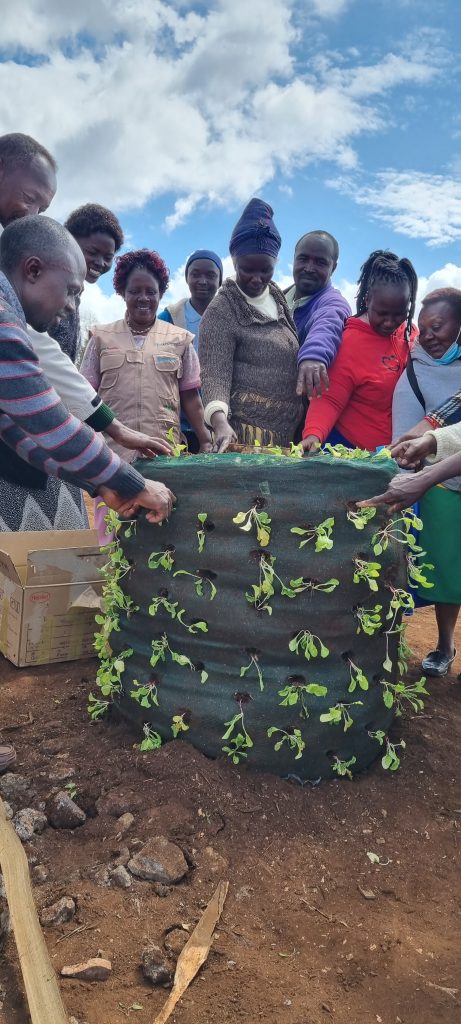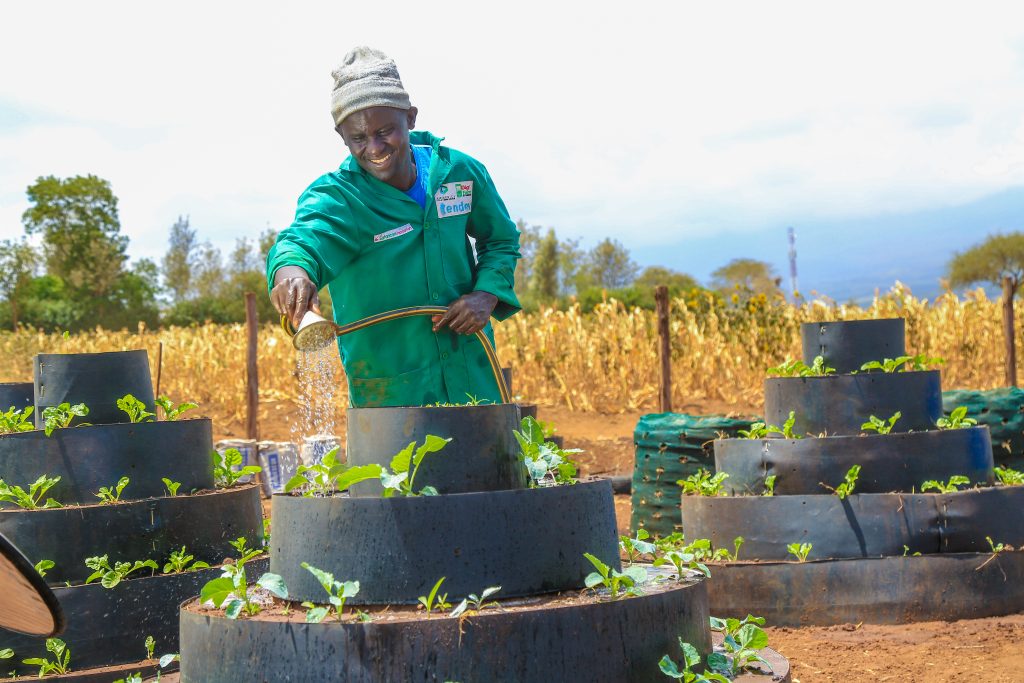
A kitchen garden, also known as a home garden or a vegetable garden, is a small garden grow at home to produce fresh vegetables, herbs, and fruits for household use. This article will guide
you on creating your kitchen garden right in your backyard, including different types of kitchen gardens in Kenya, such as sack gardens, drip irrigation systems, cone gardens, and wick
irrigation gardens.
Why You Should Have a Kitchen Garden
There are numerous benefits to having a kitchen garden. For starters, it provides fresh and organic produce that is healthier than the ones bought from the market. It helps save money.
especially during times of high inflation. It’s also an excellent way to engage in physical activity and relieve stress. And finally, it beautifies your home and can be an exciting hobby to take up.
Different Types of Kitchen Gardens in Kenya
1. Wick irrigation garden

Wick irrigation, also known as capillary or string gardening, ensures your plants receive consistent moisture by delivering water directly to the roots, creating an optimal environment for
moisture-loving crops.
Here’s how you can construct a wick irrigation garden:
- Gather your materials: a container, a wicking material, a water reservoir, and soil.
- Cut the container to the desired size and drill holes in the bottom for drainage. Line the bottom with the wicking material and fill it with soil.
- Create a water reservoir at the bottom of the container. The pool should be at least 2 inches deep and cover the entire bottom of the container.
- Add the wicking material on top of the water reservoir. The material should be long enough to reach the soil.
- Plant your seeds or seedlings in the soil and water them.
With this system, you’ll enjoy consistent plant moisture, reduced water waste, and an easy-to-use and install setup. Moisture-loving plants like lettuce, spinach, and herbs are ideal for a wick
irrigation garden.
2. Tyre Garden

Discover the eco-friendly charm of the tyre garden, also known as a tire stack garden. This method promotes sustainability by repurposing old tires into tiered structures and provides an
innovative and visually appealing ways to grow crops.
Here’s how you can construct a tire garden:
- Find a suitable location for your tyre garden.
- Gather your materials: tires, soil, compost, and plants.
- Stack them on top of each other in a pyramid shape, and fill them with soil.
- Plant your seeds or seedlings in the soil and water them.
The advantages of a tire garden include repurposing old tires, easy setup, and quick soil warming, especially in wet clay soil. It’s perfect for deep-rooted crops like tomatoes, peppers,
and carrots.
3. Simple Drip Irrigation
Simple drip irrigation is also known as trickle or micro-irrigation. This method involves setting up a network of hoses to deliver water directly to the base of each plant, ensuring efficient water
usage for crops like cucumbers and beans.
Here’s how you can construct a simple drip irrigation system:
- Poke holes in a plastic bottle using a drill or nail.
- Fill the bottle with water.
- Insert the bottle into the ground next to the plant you want to water.
- Let the water slowly drip out of the holes and water the plant.
This system is cost-effective, eco-friendly, and conserves water by minimizing runoff. Ideal for crops like cucumbers, zucchini, tomatoes, peppers, eggplant, squash, beans, and herbs.
4. Sack Garden

The sack garden is an affordable and accessible option for cultivating leafy greens. It utilises vertical space by hanging or stacking sacks filled with a well-balanced soil mix.
Here’s how you can construct a sack garden:
- Gather your materials: a sack, soil, compost, and plants.
- Cut holes with a diameter measuring about 3cm in the bag.
- Fill the bag with soil.
- Plant your seedlings into the holes on the sack and water them from the midrib.
This method maximizes vertical space, conserves water, and is easily movable. It’s suitable for leafy greens like spinach, kale, and radishes.
5. Micro Garden
Micro gardening is perfect for those with limited space or beginners. It’s simple to develop and
best suited for city dwellers with only a balcony to grow food.
Here’s how you can construct a garden:
- Gather your materials: containers, soil, compost, and plants.
- Fill the containers with soil.
- Plant your seeds or seedlings in the soil and water them.
Micro gardening is perfect for those with limited space or beginners in gardening. It conserves water and is mobile. This kitchen garden is ideal for growing herbs like basil, parsley,
thyme, lettuce, and cherry tomatoes.
6. Cone Garden

The cone garden utilizes a unique shape to save space while adding an aesthetic touch to your
garden.
Here’s how you can construct a cone garden:
- Find a suitable location for your cone garden.
- Gather your materials: a polythene sheet, soil, and manure.
- Arrange the containers and polythene layers until you reach around 5 feet.
- Fill the soil, water it sufficiently, and give it at least 12 hours to settle down before transplanting.
This method adds an aesthetic touch to your garden while saving space and conserving water. Suitable for various vegetables such as spinach, cowpeas, carrots, tomatoes, peppers, eggplants,
broccoli, cabbage, cauliflower, garden peas, and strawberries.
7. Food Robe Garden
Combine functionality and aesthetics with the food robe garden, a vertical hanging or cascading garden. The food robe garden is a vertical farm that combines micro gardens and a vertical
wooden structure designed to mimic shelves. The food robe structures need to be erected by a professional to ensure they are strong enough to carry the weight of several micro gardens.
Here’s how you can construct a food robe garden:
- Gather your: vertical wooden structure to mimic shelves, soil, compost, and plants.
- Erect the wooden structure.
- Fill the containers with soil.
- Plant your seeds or seedlings in the soil and water them.
This method is ideal for those with limited floor space and doubles as a decorative element. It’s suitable for mint, basil, and small peppers.
8. Moist Bed Garden
The moist bed garden is also raised or elevated. Constructed as a raised bed, this method improves drainage, enhances soil aeration, and reduces the risk of waterlogging, making it ideal
for cultivating root crops.
Here’s how you can construct a moist bed garden:
- Gather your materials: a polythene sheet, soil, and manure.
- Dig a hole about 1 foot deep and 4 feet wide. Line the hole with a polythene sheet.
- Fill it with a mixture of soil and manure.
- Plant your seeds or seedlings in the soil and water them.
This method improves drainage, enhances soil aeration, saves space, and reduces the risk of waterlogging. It’s well-suited for root crops like carrots, arrow roots, sweet potatoes, beets, and radishes.
Conclusion
Having a kitchen garden is not just about growing food; it’s about improving your health, saving money, and contributing to a sustainable environment. Regardless of your space, there’s always a kitchen gardening method that will work for you. So, why not start your kitchen garden today and enjoy the fruits of your labour?
